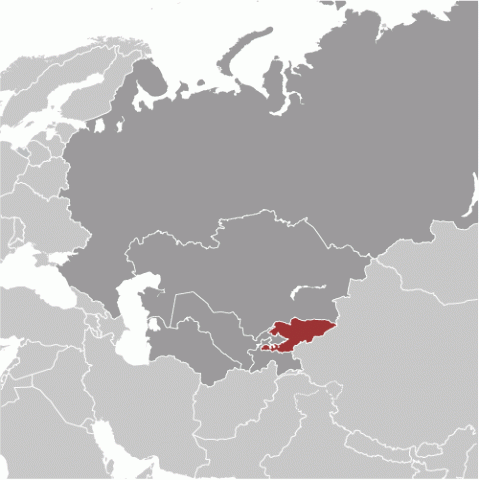Child Labor and Forced Labor Reports
Kyrgyz Republic


Moderate Advancement
In 2024, the Kyrgyz Republic made moderate advancement in efforts to eliminate the worst forms of child labor. The Ministry of Digital Development, in collaboration with the Ministry of Health and the Ministry of Labor, Social Security, and Migration, launched a project to ensure that all children are properly registered at birth, allowing them to access social services and schooling. Additionally, the government, together with the United Nations Children's Fund, published the results of a survey on child welfare undertaken in 2023, including the current state of child labor in the Kyrgyz Republic. In February 2025, a Presidential Decree repealed the ongoing labor inspection moratorium, permitting labor inspectors to resume unannounced inspections to detect potential violations of child labor laws and other labor abuses in workplaces. However, despite these efforts, the labor inspectorate lacks adequate staff and resources. Additionally, prohibitions for the commercial sexual exploitation of children do not meet international standards because no law clearly criminalizes the users (clients) of prostitution involving children.
| Children | Age | Percent and Population |
|---|---|---|
| Working | 5 to 14 | 34.0% (Unavailable) |
| Hazardous Work by Children | 15 to 17 | Unavailable |
| Attending School | 5 to 14 | 94.7% |
| Combining Work and School | 7 to 14 | 38.4% |
| Sector/Industry | Activity |
|---|---|
| Agriculture | Agriculture, including cultivating and harvesting crops, including cotton and tobacco.† Herding. |
| Industry | Construction, manufacturing, and working in sewing workshops. |
| Services | Working in bazaars and markets, including portering, shining shoes, and selling items, including food and beverages; working in restaurants and cafes; washing and repairing cars; and street work, including begging and collecting and sorting plastics. |
| Categorical Worst Forms of Child Labor‡ | Commercial sexual exploitation and use in illicit activities, including the trafficking of drugs, each sometimes as a result of human trafficking. |
† Determined by national law or regulation as hazardous and, as such, relevant to Article 3(d) of ILO C. 182.
‡ Child labor understood as the worst forms of child labor per se under Article 3(a)–(c) of ILO C. 182.
Children at Higher Risk
Children left behind by parents seeking work abroad, particularly girls, are especially vulnerable to commercial sexual exploitation and may be targeted by traffickers. NGOs report that more than 85 percent of children trafficked for commercial sexual exploitation are left-behind children. In addition, within the Kyrgyz Republic, these children have been identified engaging in child labor in markets. Children from rural and low-income families and those in the child welfare system, including orphans, are also at higher risk of being subjected to human trafficking. There are no shelters specifically for child survivors of human trafficking, meaning they are sometimes placed in orphanages where they may be at higher risk of re-victimization. Additionally, the practice of "bride kidnapping" puts girls at higher risk of forced marriage and possible subsequent forced labor or human trafficking into commercial sexual exploitation.
Barriers to Education Access
In the Kyrgyz Republic, documentation requirements for school registration continue to prevent some children from enrolling in schools. Some children cannot access their birth certificates or guardianship documents, which are required for school enrollment. During the reporting period, the Ministry of Digital Development, in collaboration with the Ministry of Health and the Ministry of Labor, Social Security, and Migration, launched a digital project to ensure complete registration of newborns to ensure their access to schools and other social services. Children living in rural areas and those with disabilities also have difficulty accessing education due to a lack of adequate facilities. However, in 2024, $16.4 million (1.4 billion soms) was allocated from the national budget for the construction and renovation of educational institutions, and at least 23 new schools and 17 kindergartens were opened. In rare cases, some parents prevent children, especially girls, from attending school for religious reasons or require older children to miss school to care for their younger siblings. Children living in state institutions or orphanages are more likely to leave school due to violence or the need to earn money.
| Standard | Age | Meets International Standards | Legislation |
|---|---|---|---|
| Minimum Age for Work | 16 | ✗ | Articles 6 and 18 of the Labor Code |
| Minimum Age for Hazardous Work | 18 | ✓ | Articles 294 and 446 of the Labor Code; Article 72 of the Code on Administrative Liability; Article 15 of the Code on Children |
| Identification of Hazardous Occupations or Activities Prohibited for Children | ✓ | Article 294 of the Labor Code; Decree 565 on the List of Works Prohibited for Persons Under Age 18 | |
| Prohibition of Slavery, Debt Bondage, and Forced Labor | ✓ | Articles 10 and 446 of the Labor Code; Article 15.2 of the Code on Children; Article 1 of the Law on Preventing and Combating Human Trafficking; Articles 166 and 170 of the Criminal Code | |
| Prohibition of Child Trafficking | ✓ | Article 1 of the Law on Preventing and Combating Human Trafficking; Articles 166 and 167 of the Criminal Code | |
| Prohibition of Commercial Sexual Exploitation of Children | ✗ | Articles 166–168 of the Criminal Code; Articles 5 and 15 of the Code on Children | |
| Prohibition of Using Children in Illicit Activities | ✓ | Articles 19, 180, 181, 282, and 283 of the Criminal Code; Articles 5 and 15 of the Code on Children | |
| Minimum Age for Voluntary State Military Recruitment | 18 | ✓ | Article 24.1 of the Law on Military Service |
| Prohibition of Compulsory Recruitment of Children by (State) Military | ✓ | Articles 17.1 and 22.1 of the Law on Military Service; Article 413 of the Criminal Code | |
| Prohibition of Military Recruitment by Non-state Armed Groups | ✓ | Article 413 of the Criminal Code | |
| Compulsory Education Age | 17‡ | ✓ | Article 16 of the Law on Education |
| Free Public Education | ✓ | Article 16 of the Law on Education |
‡ Age calculated based on available information
The Kyrgyz Republic's labor law governing the minimum age for work is not in compliance with international standards because according to Article 6 of the Labor Code, protections granted in the Labor Code, such as the minimum age for employment, are not extended to children engaged in non-contractual employment. In addition, as the minimum age for work stated in the Labor Code is lower than the compulsory education age, children may be encouraged to leave school before the completion of compulsory education. Further, the government does not have a list of permitted light work activities. Finally, although Articles 166–168 of the Criminal Code of the Kyrgyz Republic criminalize involving a minor in commercial sexual exploitation, no law clearly criminalizes the users (clients) of prostitution involving children.
| Organization/Agency | Role & Activities |
|---|
| Ministry of Labor, Social Security, and Migration (MLSSM): Monitors worksites and refers child laborers to social services. Coordinates with the Inspectorate for Minors’ Affairs in the Ministry of Internal Affairs, the Prosecutor General’s Office, and regional State District Administration authorities to enforce child labor laws. Identifies at-risk children, refers them for social services through a Child Protection Plan, and monitors their well-being, including the prevention of their involvement in child labor. Assists child survivors of human trafficking through the Department for the Development of Social Services for Families and Children. Operates an electronic platform through which citizens and organizations can report labor law violations. Runs a hotline to which anyone can report child abuse and exploitation, including the worst forms of child labor, and refers cases for criminal prosecution, if appropriate, as well as a hotline through which children, parents, and legal guardians can report child abuse and exploitation, including the worst forms of child labor, and receive referrals for services. Between January and September 2024, these hotlines received 43,956 calls. In 2024, MLSSM also implemented an action plan to prevent homelessness, neglect, and juvenile delinquency. The plan included a campaign called "Adolescent – Labor" that established a system to identify children at risk of being exploited for labor. As part of this campaign, in the first quarter of 2024, the government identified 37 working children and 2 children involved in the worst forms of child labor. |
| Ministry of Internal Affairs: Enforces criminal laws related to child labor, including its worst forms. Conducts independent inspections and joint raids with MLSSM to identify violations, which can be referred to the Prosecutor General's Office for prosecutorial action. |
| Overview of Enforcement Efforts | 2024 |
|---|---|
| Has a Labor Inspectorate | Yes |
| Able to Assess Civil Penalties | Yes |
| Routinely Conducted Worksite Inspections | Yes |
| Unannounced Inspections Permitted | Yes |
| Has a Complaint Mechanism | Yes |
| Imposed Penalties for Child Labor Violations | Unknown |
| Conducted Criminal Investigations for Worst Forms of Child Labor Crimes | Unknown |
| Imposed Penalties for Worst Forms of Child Labor Crimes | Unknown |
In 2024, fewer than 50 labor inspectors conducted 801 inspections between January and September, finding an unknown number of child labor violations. It is also unknown whether investigations into suspected cases of the worst forms of child labor were conducted, prosecutions were initiated, or perpetrators were convicted.
| Coordinating Body | Role & Activities |
|---|
| Commissioner for Children's Rights: Appointed by the President, tasked with promoting and coordinating the activities of government bodies and local governments to protect the rights and interests of children in the Kyrgyz Republic and Kyrgyz children residing abroad. In September 2024, the Commissioner convened a meeting to finalize a national action plan designed to improve children's access to education and social services, and to strengthen mechanisms for protecting children’s rights. |
| Policy | Description & Activities |
|---|
| Program for the Protection of Children (2023–2026): Includes action items on addressing child labor, including revising the hazardous work list for children, enhancing social services for vulnerable children and families, and creating an Action Plan on the Prevention and Elimination of Child Labor. Research was unable to determine any actions taken under this program during the reporting period. |
| Program | Description & Activities |
|---|
| MLSSM Social Protection Program:‡ Aimed at identifying children in difficult circumstances, monitoring their progress, and providing access to resources including direct financial assistance. Includes a government-funded cash transfer program for families living in difficult situations, including families with children engaged in child labor. The MLSSM develops an Individual Child Protection Plan for each identified child in need, which determines which services are provided to them. Services may include placement in a foster family, receiving identity documents, being returned to school, and provision of social assistance. During the reporting period, 3,482 children received assistance under this program. |
| Ministry of Education and Science National School Attendance Database:‡ Unified online database maintained by the Ministry of Education and Science to monitor school enrollment and attendance. Based on these data, government ministries and local government officials can identify and assist children who may be vulnerable to child labor. This program remained active during the reporting period. |
‡ Program is funded by the Government of the Kyrgyz Republic.
† The government had other social programs that may have included the goal of eliminating or preventing child labor.
| Area | Suggested Action |
|---|---|
| Legal Framework | Ensure that the law’s minimum age provisions apply to all children, including those working without an employment contract. |
| Raise the minimum age for work from age 16 to 17 to align with the compulsory education age. | |
| Criminally prohibit and penalize the use of a child for prostitution, including the users (clients) of prostitution involving children, and ensure that laws prohibiting the offering of children for prostitution cover all children under age 18. | |
| Ensure that the law’s light work provisions specify the activities in which children may undertake light work. | |
| Enforcement | Publish complete information about the Ministry of Labor, Social Security, and Migration's efforts to enforce prohibitions on child labor, including information on the inspectorate's funding and the number of unannounced labor inspections conducted at worksites. |
| Ensure that child labor violations identified by regulatory and law enforcement agencies are appropriately referred for investigation and prosecution. | |
| Increase the number of labor inspectors from fewer than 50 to 144 to ensure adequate coverage of the labor force of approximately 2.9 million people, and ensure that inspectors have adequate resources to conduct inspections in rural areas. | |
| Publish criminal law enforcement information, including whether investigations into the worst forms of child labor were undertaken, the number of prosecutions and convictions, and whether training for criminal investigators was provided. | |
| Conduct targeted inspections in all sectors at high risk of child labor, including in rural areas, agriculture, and manufacturing. | |
| Ensure that criminal law enforcement authorities receive adequate training, and that agencies investigate, prosecute, and impose penalties for violations related to the worst forms of child labor under the appropriate statutes, including cases of possible law enforcement and judicial complicity in abusing victims and protecting offenders. | |
| Require law enforcement officials to follow established procedures and ensure that child survivors of human trafficking are not subjected to questioning without the support of a social worker or psychologist. | |
| Government Policies | Ensure that activities are undertaken to implement the Program for the Protection of Children and publish results of activities implemented during the reporting period. |
| Social Programs | Ensure adequate educational facilities so that all children have access to free education, including children with disabilities, children in rural areas, and children without birth certificates and other identity documentation. |
| Improve oversight of state-run institutions, such as orphanages, to ensure that the children living in and aging out of these institutions are not being subjected to child labor. | |
| Expand existing programs to address the scope of the child labor problem, particularly among left-behind children, children in commercial sexual exploitation, and children working in agriculture, including cultivating cotton. | |
| Ensure that activities are undertaken to implement key social programs to address child labor and make information about implementation measures publicly available. |



